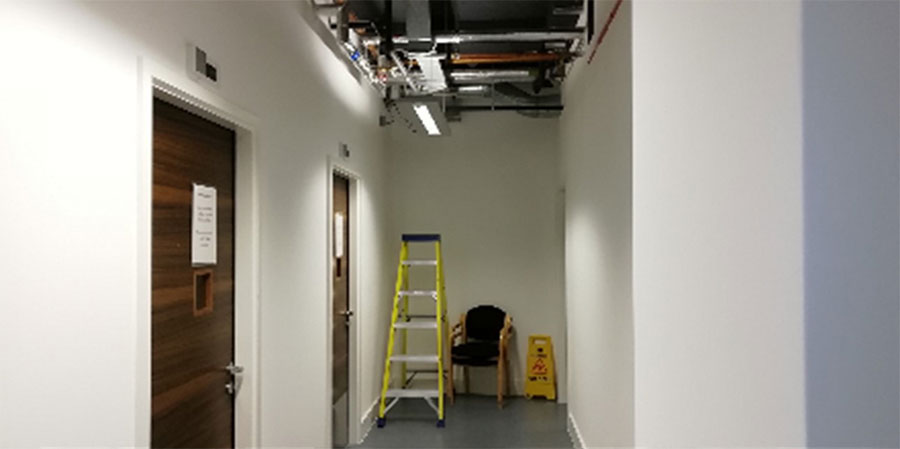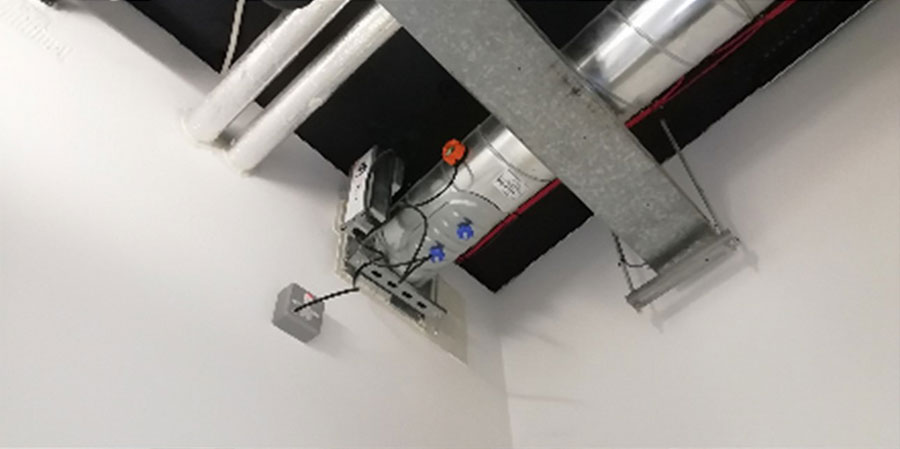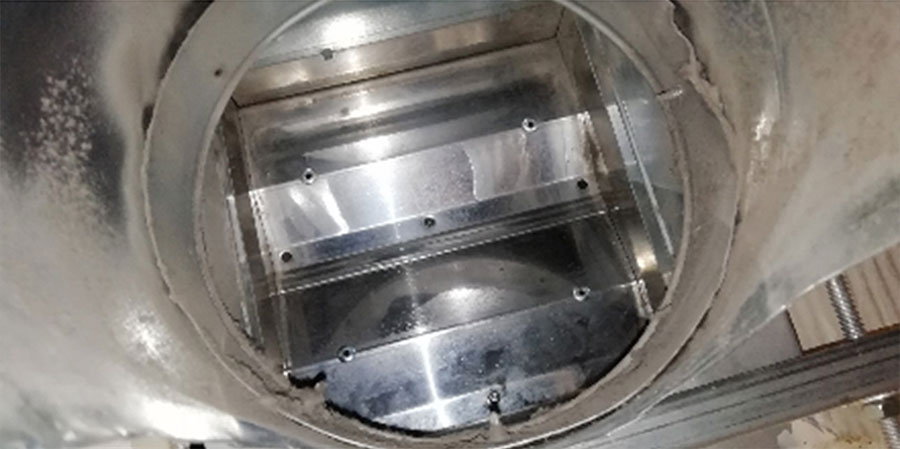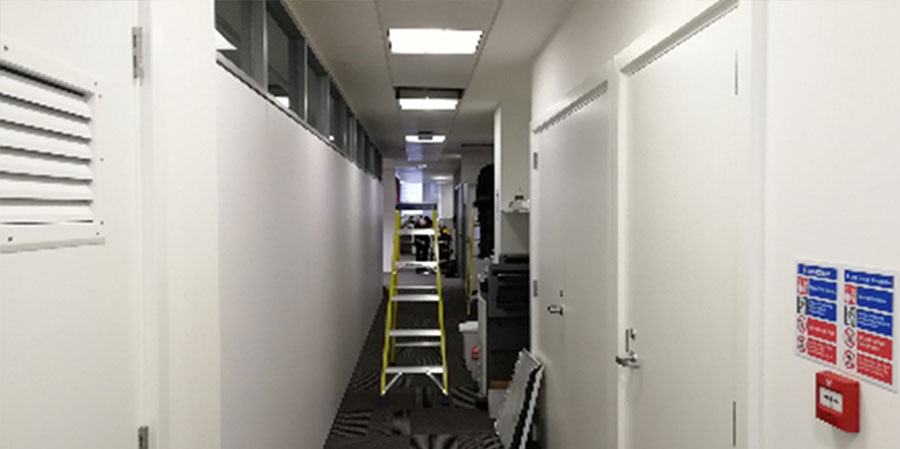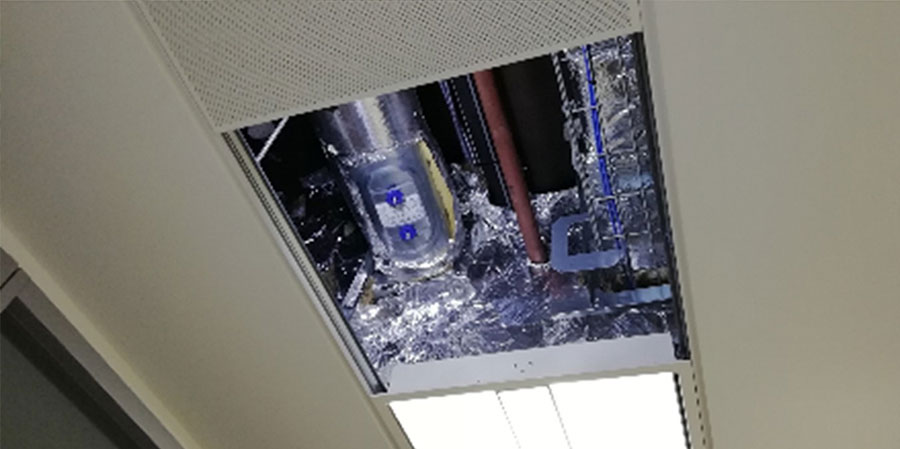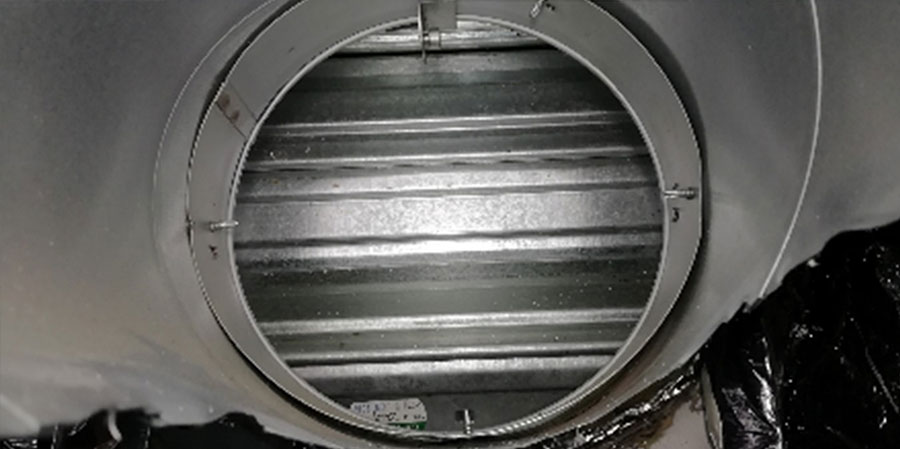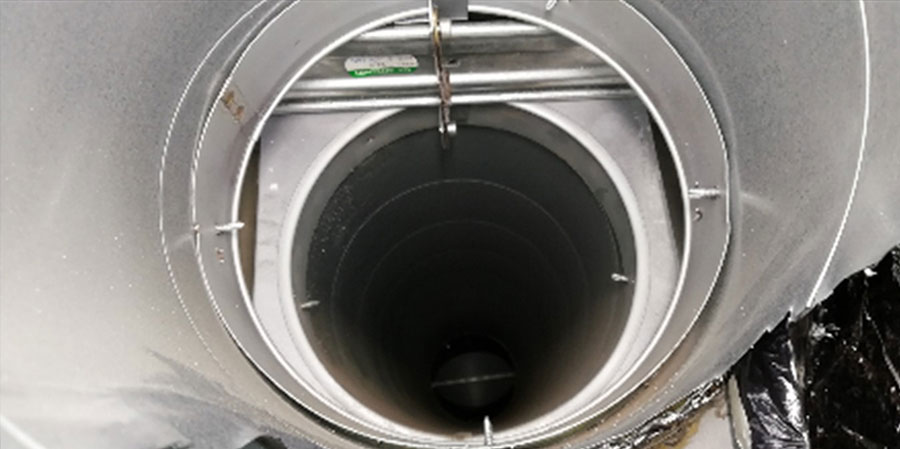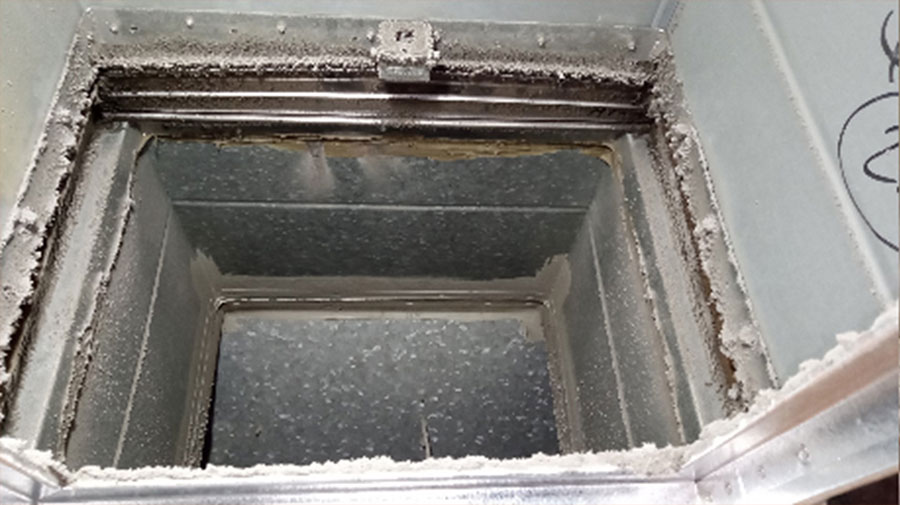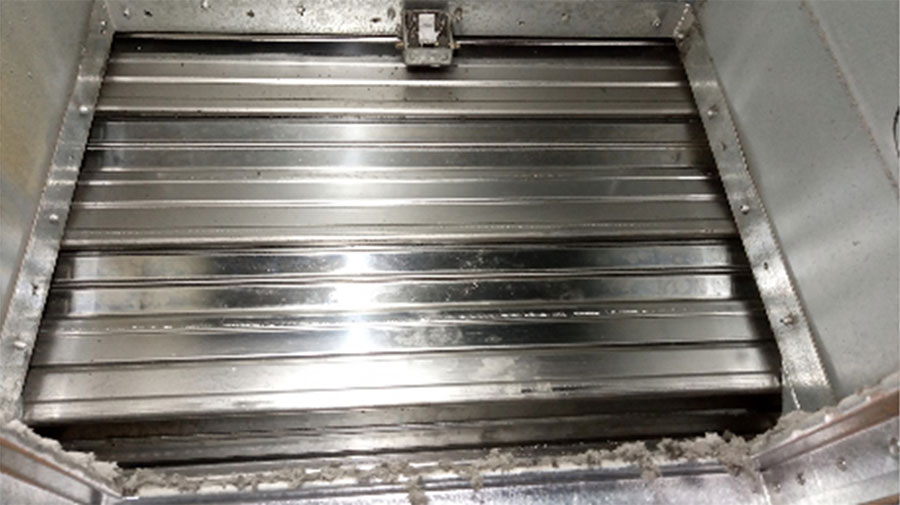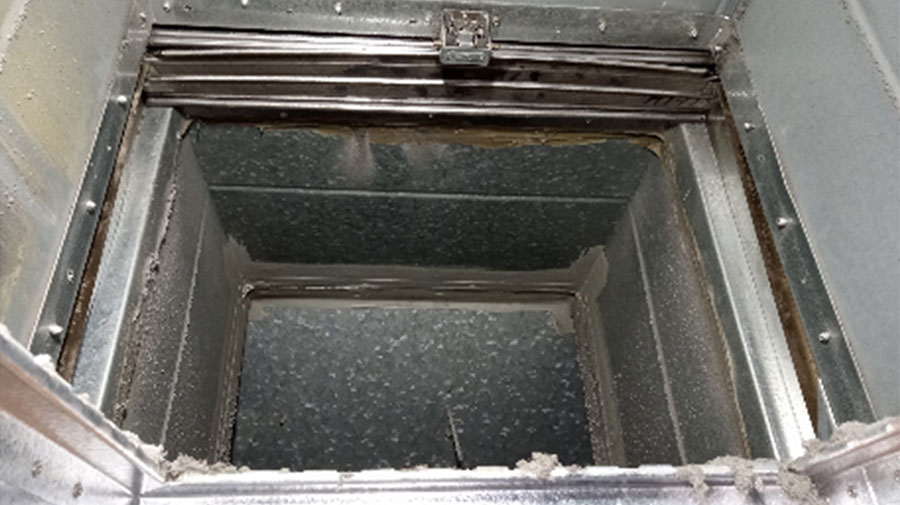BS 9999:2017 states:
Arrangements should be made for all fire dampers to be tested by a competent person on completion of the installation and at least annually, and to be repaired or replaced immediately if found to be faulty ”
To reach fire damper compliance each damper must be inspected, and a drop test carried out. The first step to fire damper test procedure is a visual inspection. The visual inspection is carried out on the damper to ensure the following:
Many faults or defects can be identified during the initial inspection. Should there be an accessibility issue, obstruction, or damage to the damper, these will be noted as required remedial actions. Once all visual inspections are complete and satisfactory, a drop test can be carried out.
What is a fire damper drop test?
Fire dampers form part of a building ventilation system and are installed where air handling ducts pass through fire-separating elements such as compartment walls or enclosures protecting escape routes.
Typically, a fire damper is a metal curtain within a duct held up by a thermal element (referred to as a fusible link) and released in the event of a rise in temperature. The thermal element will melt at a set temperature releasing a spring-operated metal curtain, which is pulled down to fill the opening the duct passes through, preventing the passage of fire.
During a fire damper drop test the operative will:
Why do dampers need to be cleaned?
Fire and smoke dampers are passive fire protection assets subjected to constant air flow through the building ventilation systems. As a result, dampers can accumulate a buildup of dust and debris negatively impacting the performance of the damper.
How often should you conduct fire damper testing?
In most cases routine inspection, testing and maintenance is required every 12 months. However, in dust linden environments more frequent testing is required. Dampers in hospitals or high-risk environments will also require more frequent testing.
Evidence of fire damper testing?
Completion of the fire damper inspection and testing routine will not satisfy compliance. You need to be able demonstrate and provide appropriate evidence that fire dampers (as part of your safety systems) are being maintained.
Essential provides one of the most comprehensive reports available on the market. Including full photographic evidence of testing and observations.

